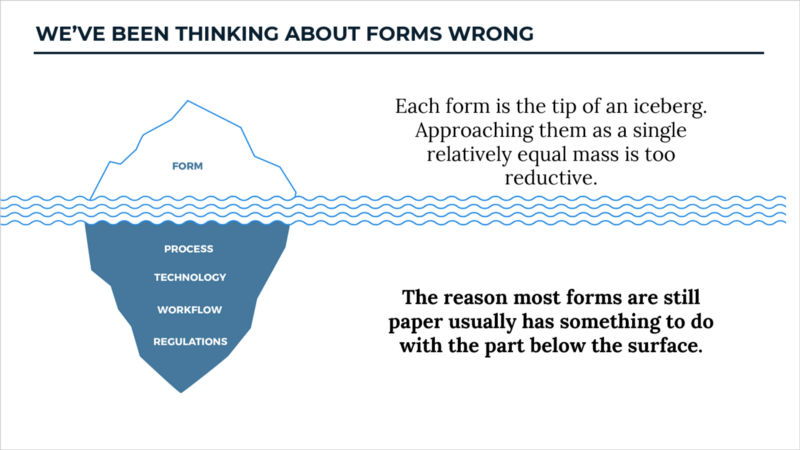Boring Details Make Effective Legislation

Sira Anamwong/Shutterstock.com
In a perfect world, you’d see the addition of mandates come with some much-needed subtraction as well.
Often the most critical parts of major legislation are the most boring. For those of us working to bring government into the digital age, the bipartisan 21st Century Integrated Digital Experience Act, known as the 21st Century IDEA Act, is an incredibly important piece of legislation which gets the big things right. Its downside is that it’s not boring enough.
Originally introduced by a bipartisan group including Reps. Ro Khanna, D-Calif., and John Ratcliffe, R-Texas, the 21st Century IDEA is a sight for sore eyes if you’re a fan of the original strategy of the U.K.’s Government Digital Service. After the Senate version of the bill was passed out of the Committee on Homeland Security and Governmental Affairs, it’s clear this legislation has momentum and we have an opportunity to ensure it delivers the kind of change its supporters seek.
First, why am I a fan of IDEA? In part, because the bill starts off like an album of the GDS’s greatest hits, in one line format. Among other things, it calls for federal agencies to:
- Eliminate or consolidate websites or web pages that are duplicative or overlapping.
- Ensure that each public-facing website and digital service has a consistent appearance.
- Ensure that each website or digital service is designed around user needs with data-driven analysis influencing management and development decisions, using qualitative and quantitative data to determine user goals, needs, and behaviors, and continually test the website or digital service to ensure that user needs are addressed.
Re-read that last bullet. It shouldn’t be amazing to see, but it is: The bill actually calls for agencies to design around user needs through data-driven analysis and continuous testing of the digital service to ensure these needs are addressed! It encapsulates the work we at Code for America do every day; driving toward user-centered, iterative, and data-driven functionality. It’s the core of delivery-driven government.
Historical Context
It’s helpful to understand a bit of the history of these digital transformation efforts. The GDS started off with a massive effort to move thousands of U.K. government websites to a single domain (gov.uk) so they shared a common publishing platform, a common architecture and design, and common voice and tone. Critically, those who led the effort didn’t just move the existing websites onto a new platform; they worked with the agencies to make sure all the critical, relevant content was properly represented in accessible language on gov.uk, but to do that, they had to throw most of the existing content out. There were thousands of pages of content that were duplicative or impossible to understand. At times, it bordered on absurdity: One page contained the helpful information that you should consider wearing a sweater if it gets cold outside. Thanks, government!
In the U.K., what GDS did was not driven by legislation. After all, the GDS mantra back then was “the strategy is delivery.” GDS leadership found legislation-driven or even policy-driven transformation efforts distasteful, and for good reason. So much law and policy amount to foisting additional mandates on government entities (in this case federal agencies, who seem to have a new mandate every week) without actually REMOVING any of the burdens that make it hard for them to operate in a user-centered way in the first place, especially those that make it hard to build the right talent pool. When you’re trying to run a marathon with hundreds of weights attached to you, it may not help much to order you to cross the finish line. It could help to take a few weights off of you to speed you up, and this legislation doesn’t do that. To be fair, the authors of this bill are observing that some agencies are not terribly fit to run this race at all, and mandating that they get moving is one of the only tools you have if you’re in the legislative branch. But in a perfect world, you’d see the addition of mandates come with some much-needed subtraction as well.
Unintended Consequences
And we should also consider some possible unintended consequences of the IDEA bill. One provision requires “an online, mobile-friendly, digital service option for any in-person Government transaction or paper-based process” to be available to the public within two years and the digitization of any “paper-based form, application, or service that is related to serving the public” within one year. Requiring this speed is, on the one hand, bold and commendable.
But artificially dictating speed won’t take into account reviewing the thousands of forms and services submitted, which may prevent staff from truly understanding user needs up front. This runs the risk of simply importing existing bad business processes online.
Josh Gee, who spent two years moving government forms online at the City of Boston, provides some lessons for us in a great blog post. For example, he was asked to move the form you use to request a death certificate online, and explains:
Traditionally, you would submit a form requesting a certificate. If the City had it, they would send it to you. If they didn’t, they would tear up your check and send you a letter saying they didn’t. Replicating that online would be terrible for both the user and the City. The application we are developing will let users search the database and *then* order a death certificate when they’ve found the certificate they are looking for. We had to flip the process to make it work.
The question is whether federal agencies, when asked to move all their forms online in a relatively short period of time, will do the work to redesign the processes behind those forms (some of which are MUCH more complex than the one Josh describes), just get them up online in order to comply. Or fail to comply entirely, which is much more likely than the general public might think. (Four years after the open data mandates in the Obama administration, most federal agencies were still non-compliant, and today many either remain so or have slid back.)
If you don’t have technical people around to help iterate on these forms and services over time without the heavy lift of a procurement, hastily moving to digital could freeze the services where they stand today. Software encodes these process, possibly making them HARDER to change. That is not what the authors of this bill want.

To avoid that outcome, we all need to understand that the true challenges of this work are not technical. As Josh Gee explains about his experience:
On average, it took me about 30 minutes to make a digital form and five weeks to meet with, earn the trust of, and get buy-in from the employees who would use it.
If you’ve read this far, I imagine my fellow government alums who have done this work are now nodding furiously. Those five weeks may seem tedious, but those five weeks include the important and interesting work. Josh describes:
Early on I began to notice a pattern. A few weeks after I moved a form online, some departments would to reach back out and ask for tools to help them manage digital submission, “This has been absolutely amazing. It would be great if I could approve it and then send it to Steve for his signature”. I thought a lot about the phrase salami slicing. If I tried to change everything about the way these departments worked right off the bat, they would have resisted every step of the way. Moving just a part of their workflow online made them eager to go completely digital.
The road to what the authors of this bill actually want—services and forms “designed around user needs”—is either the thoughtful reimagining of the business processes they represent, which takes a lot of time, or the ability to adjust those processes iteratively, as in Josh’s case. Either outcome takes time.
Avoiding “once and done” requires people like Josh, thousands of them. But the availability of those people within government would be greatly enhanced by a number of civil service reforms—more removal of those weights that make us slow us down as we run our marathon—which this bill doesn’t address.
But we must move forward.
We should not let the perfect be the enemy of the good. This bill should be celebrated for many reasons, not the least of which is that it embraces a language and framing around user needs that is underused by lawmakers. But in a perfect world, this is the start of a conversation that leads us to ask, “What else?”
Some of that “what else” doesn’t sit with lawmakers, but many of the obstacles digital service professionals in government must constantly navigate are exactly that: the unintended consequences of well-intended legislation.
Legislators must learn to understand the long-term effects of their work, not just the near-term optics. And it’s what we’ve voted them in to do: much of what does need the attention of lawmakers—laws governing civil service rules, IT governance, laws like the Clinger-Cohen Act, etc.—is so profoundly boring to the American public that elected leaders have no obvious incentive to address it. But it’s the boring stuff that makes it so hard to do what IDEA would mandate.
As this legislation gains momentum, we have an opportunity to help legislators get it right. That’s why I am calling on the digital government community to help us identify all the boring stuff that needs to be addressed in order for IDEA to truly achieve its goals, not just be another benchmark that agencies fail to live up to. IDEA is an incredibly exciting opportunity; how could we make it more effective?
Jennifer Pahlka is the founder and executive director of Code for America. In 2013-2014, she served as the US deputy chief technology officer, where she helped found the US Digital Service.





